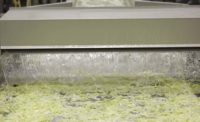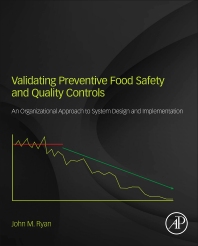Food Safety Solutions: Seven-step program
Integrated pest management helps food processors -- and the environment.
Summer has arrived and pests are out in full force. They’ll be on the lookout for an easy meal and a temperate place to “chill” out - and food processing facilities are their version of the perfect “vacation” spot.
These summer invaders are more than a mere nuisance. Cockroaches, flies and rodents can carry disease-causing pathogens that threaten the safety of your products. Fortunately implementing an environmentally friendly integrated pest management (IPM) program can help to keep your facility from becoming this summer’s pest hot spot as well as keep your operation pest-free throughout the year.
IPM is an environmentally sensitive approach that emphasizes prevention rather than non-targeted routine treatments. A licensed pest management professional can help you implement and maintain an IPM program at your facility. Before getting started, review these seven steps that pest professionals follow to develop a customized plan for any facility:
Entry points – Pests will enter through shipping and receiving areas, but they also can utilize tiny gaps around poorly sealed windows and doors or conduits and vents. A cockroach only needs 1/16 of an inch to enter, while mice can pass through a dime-sized hole.
Food sources – This not only includes the products you’re processing or storing, but also food and crumbs in employee break areas.
Water sources – Pests only need a small amount of water to survive, so even the tiniest of leaks or spills can attract insects and rodents.
Harborage areas – Pests will use cracks in the wall and even cardboard or other packaging for shelter.
Building barriers – A 30-inch gravel strip around the building presents an obstacle bugs must crawl over and an open space rodents will avoid.
Light placement – Install insect attracting mercury-vapor lights at the outside edge of the parking lot to attract pests away from the building. Sodium vapor lights attract fewer pests and can be used near building entrances.
Clean environment – Eliminate food and water sources by cleaning up spills immediately and removing garbage regularly. Sweep and mop floors and clean sinks, drains and compactors on a regular basis. These all are areas where pests find food sources. An organic cleaner, such as OE-30, cuts grease and grime and protects the environment.
Though it’s not an official step, teamwork is a key ingredient to a successful IPM program. Your pest management professional can provide training sessions for employees on the importance of following the seven steps of IPM, immediately reporting pest sightings and any recommended additions to the proactive sanitation program for your facility. With great teamwork, your facility can maintain a safe food processing and storage environment.
Summer has arrived and pests are out in full force. They’ll be on the lookout for an easy meal and a temperate place to “chill” out - and food processing facilities are their version of the perfect “vacation” spot.
These summer invaders are more than a mere nuisance. Cockroaches, flies and rodents can carry disease-causing pathogens that threaten the safety of your products. Fortunately implementing an environmentally friendly integrated pest management (IPM) program can help to keep your facility from becoming this summer’s pest hot spot as well as keep your operation pest-free throughout the year.
IPM is an environmentally sensitive approach that emphasizes prevention rather than non-targeted routine treatments. A licensed pest management professional can help you implement and maintain an IPM program at your facility. Before getting started, review these seven steps that pest professionals follow to develop a customized plan for any facility:
Step 1: Inspection
The first step of any successful IPM program is to inspect the grounds and the exterior perimeter of the building followed by a complete inspection of the interior. These inspections should help determine if there are any existing pest problems as well as identify conditions conducive to pest entry and survival. Focus on the following hot spots:Entry points – Pests will enter through shipping and receiving areas, but they also can utilize tiny gaps around poorly sealed windows and doors or conduits and vents. A cockroach only needs 1/16 of an inch to enter, while mice can pass through a dime-sized hole.
Food sources – This not only includes the products you’re processing or storing, but also food and crumbs in employee break areas.
Water sources – Pests only need a small amount of water to survive, so even the tiniest of leaks or spills can attract insects and rodents.
Harborage areas – Pests will use cracks in the wall and even cardboard or other packaging for shelter.
Step 2: Preventive actions
Prevent pests by mitigating access to their three survival needs: food, water and shelter. Simple steps to prevent pests include:Building barriers – A 30-inch gravel strip around the building presents an obstacle bugs must crawl over and an open space rodents will avoid.
Light placement – Install insect attracting mercury-vapor lights at the outside edge of the parking lot to attract pests away from the building. Sodium vapor lights attract fewer pests and can be used near building entrances.
Clean environment – Eliminate food and water sources by cleaning up spills immediately and removing garbage regularly. Sweep and mop floors and clean sinks, drains and compactors on a regular basis. These all are areas where pests find food sources. An organic cleaner, such as OE-30, cuts grease and grime and protects the environment.
Step 3: Identification
Work with a pest management professional trained in pest biology and behavior to identify the type and growth stages of any pests found in your facility. Correct identification of the pest could allow for more effective targeted treatments.Step 4: Analysis
Once you have identified what type of pests you have, the next step is to discover why they call your facility home. Whether it’s due to plenty of food and water sources or pests entering with your employees or deliveries, your pest management professional can help you determine why you have pests and how to address the root causes.Step 5: Treatment selection
Your pest management professional will use findings from the analysis stage to choose the most effective treatments. IPM programs focus on non-chemical options first. This includes many of the same sanitation and facility maintenance techniques discussed in the prevention section. If chemicals are needed, the first choice is low-impact materials. These are used in the least volatile form and only in targeted areas.Step 6: Monitoring
Monitor your IPM program on an ongoing basis. This will help you spot any pest activity that occurs before it transforms into a full-blown infestation. Your staff can help with this step by reporting any sightings or conditions that are likely to attract pests. A pest-sighting log can be used to assist the monitoring process.Step 7: Documentation
Keep all pest-sighting reports, service records, applicator licenses, corrective action reports and other documents together in a central location or logbook. Auditors will look at these as evidence of a proactive pest management program.Though it’s not an official step, teamwork is a key ingredient to a successful IPM program. Your pest management professional can provide training sessions for employees on the importance of following the seven steps of IPM, immediately reporting pest sightings and any recommended additions to the proactive sanitation program for your facility. With great teamwork, your facility can maintain a safe food processing and storage environment.
Looking for a reprint of this article?
From high-res PDFs to custom plaques, order your copy today!






